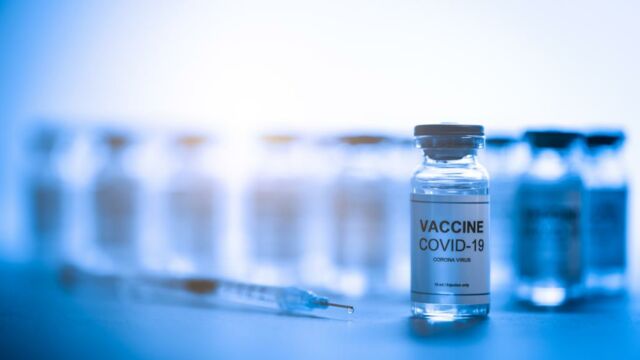The Office for National Statistics (ONS) revealed the data on who is most likely to suffer from coronavirus infection after being vaccinated, with youth, healthcare workers and non-white people being the most likely to contract the virus.
Discover our latest podcast
Coronavirus infection after vaccination is rare but still entirely possible. No COVID vaccine is 100% effective, meaning some breakthrough cases are expected. Those who take only one dose of the vaccine can also be infected with coronavirus as the efficacy of a single Moderna jab stands at just 69.5% and Pfizer 52.4%.
Additionally, vaccines take roughly two weeks to take effect, meaning people still need to remain vigilant until such time has passed. The chances of being infected with COVID-19 then drops sharply after the 21-day mark.
ONS data found that just 0.5% of people with one dose of a COVID vaccine contracted the virus, a number that fell to 0.07% after two jabs. And, patients that did test positive after vaccination were less likely to have a high viral load or severe symptoms.
Who is more likely to catch COVID after vaccination?
When assessing the figures, the ONS took on a ‘hazard ratio’ strategy that compares COVID infection risk to two groups simultaneously. The group that has the higher risk factor is then labelled as more likely to test positive for the virus after vaccination.
The ONS looked at factors such as age, household size, ethnicity, gender, and whether or not the person was a patient-facing healthcare worker.
Age
ONS research found that age was the most significant deciding factor on whether or not a person would test positive for coronavirus after inoculation. Hazard ratio figures showed that those aged 20 were twice as likely to become infected after vaccination than those aged 80 and over.
Household size
The study also found that the larger the household, the higher the risk of COVID infection. Those living in a single home had a hazard ratio of one, with the ratio increasing to 1.49 in households of five or more.
Ethnicity
ONS results compared that hazard ratio for those for white vs non-white vaccine receivers, with those who are non-white having a 1.18 likelihood of coronavirus infection after vaccination. In comparison, white residents had a hazard ratio of 1.
Gender
Data did not show a considerable difference in risk of infection between males and females, with only a 0.03 difference. Males have a hazard ratio of 1, while women sat at 0.97.
Healthcare workers
Perhaps the second-most significant contributor to the likelihood of infection after vaccination is whether or not the person is a patient-facing healthcare worker. Those who were patient-facing had a ratio of 1.31 compared to just 1 for healthcare workers in non-patient-facing roles. This, of course, is to be expected as those who regularly interact with patients have a higher chance of being exposed to the virus.
Prof Kevin McConway, Emeritus Professor of Applied Statistics, The Open University, explained that the data is not dissimilar to the chances of infection for those who haven’t been vaccinated:
In the analysis of characteristics of people who tested positive after vaccination, the groups who were more likely to be infected after vaccination mostly correspond to the groups who would be more likely to be infected even if they weren’t vaccinated – people working in patient-facing health care and in care homes, those living in larger households, in areas of higher deprivation, and in rural villages rather than large urban areas. None of that is very surprising, I think.















